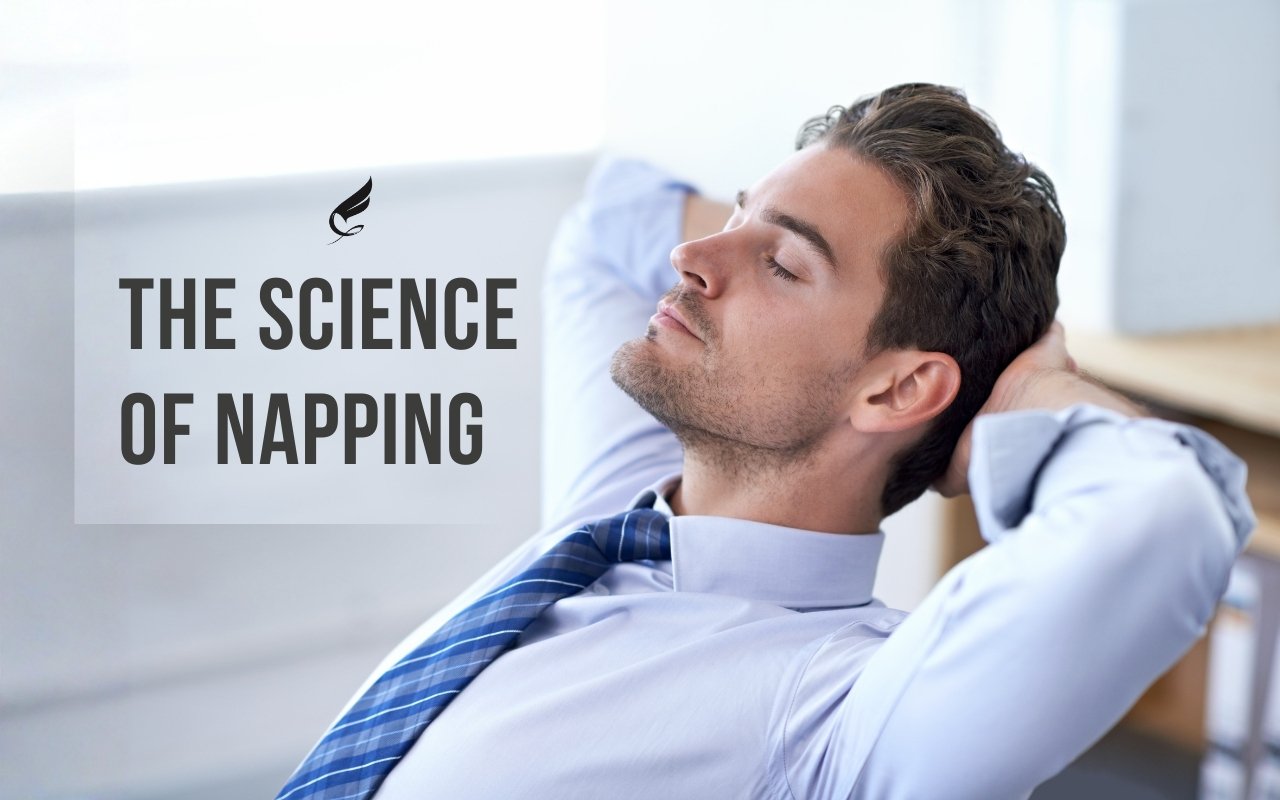The Science of Napping: How to Use Power Naps to Boost Energy and Performance
In the relentless culture of "hustle," taking a nap is often viewed as a luxury or a sign of laziness. For the high-performing professional, taking time out of a packed daily schedule to sleep seems counterintuitive. But what if we reframed the daytime nap not as a retreat from productivity, but as a strategic tool to enhance it?
The afternoon slump is a real biological phenomenon. If you're suffering from insufficient sleep or sleep deprivation, this dip can feel even more pronounced, sabotaging the second half of your workday. While many reach for another cup of coffee, research shows that a short, scientifically structured midday nap can be a far more powerful and restorative solution for your brain and body.
This is your guide to the science of napping—a protocol for using strategic rest to boost your energy, sharpen your cognitive functioning, and gain a competitive edge.
The Science: The "Why" Behind the Mid-Afternoon Slump
That post-lunch dip in alertness is driven by two main factors:
Postprandial Somnolence: After a meal, your body diverts energy to digestion, which can lead to feelings of drowsiness.
Circadian Rhythm: Your body's internal clock has a natural dip in alertness roughly 7-9 hours after you wake up. For most healthy adults, this falls right in the early afternoon or mid-afternoon. This is a normal part of your sleep-wake cycle. A quick nap works with this natural dip, rather than fighting against it.
The Power Nap Protocol: The "How-To" for High Performance
Not all naps are created equal. Napping for too long can leave you feeling groggy and disoriented—a state known as sleep inertia. The key is to be precise with your nap length.
1. Duration is Everything: The 10-20 Minute Power Nap The ideal power nap is 10-20 minutes long. This is the sweet spot.
Why it works: This duration keeps you in the lighter stages of sleep (non-rapid eye movement or NREM stage 1 and 2). This light sleep is sufficient to provide significant health benefits, including improved alertness, enhanced cognitive performance, better memory, and quicker reaction times. Crucially, it prevents your brainfrom entering deep sleep (NREM stage 3). Waking up from deep sleep is the primary cause of sleep inertia.
2. The 90-Minute "Full Cycle" Nap For those who are seriously sleep-deprived (like shift workers), a longer nap of 90 minutes can be beneficial.
Why it works: A 90-minute nap allows your body to complete one full sleep cycle, including light sleep, deep sleep, and REM sleep (the stage associated with dreaming). Waking up at the end of a full cycle, rather than in the middle of it, helps you feel refreshed and avoid that groggy feeling.
3. Timing is Critical: The Mid-Afternoon Window The best time for a daytime nap is typically between 1 PM and 3 PM.
Why it works: This aligns with your body's natural circadian dip. Napping too late in the afternoon can decrease your "sleep drive," making it harder to fall asleep at your regular bedtime and disrupting your nighttime sleep.
4. The "Nappuccino": An Advanced Technique This is a favorite trick of high-performers.
How it works: Quickly drink a cup of coffee right before your 20-minute nap. The caffeine takes about 20-30 minutes to take effect. As you wake up, the caffeine will be kicking in, creating a powerful dual-effect of feeling refreshed from the nap and increased alertness from the stimulant.
How to Create the Perfect Nap Environment
Go Dark: Use a sleep mask or find a dark room. Blocking out light is crucial.
Stay Quiet: Use earplugs or noise-canceling headphones.
Set an Alarm: This is non-negotiable. Knowing an alarm is set will help your mind relax.
Don't Stress About Falling Asleep: Even if you don't fully fall asleep, the act of quiet rest has restorative benefits for your overall health.
Strategic napping is a powerful tool, but it is not a substitute for a full night of restorative sleep. For a complete framework on optimizing your sleep at night, read our Ultimate Guide to Sleep and Recovery for Optimal Fitness in Dubai. Sanaa - pls do not forget to add the link
A Note on Sleep Disorders
While napping is beneficial for most healthy adults, if you experience excessive daytime sleepiness, it could be a sign of an underlying issue like sleep apnea or insomnia. In such cases, it is always best to consult with a sleep medicineprofessional.
Conclusion: Recharging for a Stronger Finish
In a world that prizes constant activity, strategic rest is a powerful competitive advantage. A short nap is not a sign of weakness; it's an intelligent tactic to manage your energy, sharpen your mood, and improve your well-being. Stop fighting the afternoon slump and start using it to your advantage.
Ready to Build Your Personal Blueprint for Success?
This guide gives you the knowledge, but applying it consistently to your unique schedule and lifestyle is where real results happen. Let one of our expert coaches create a strategy built specifically for your body, your schedule, and your unique goals.







